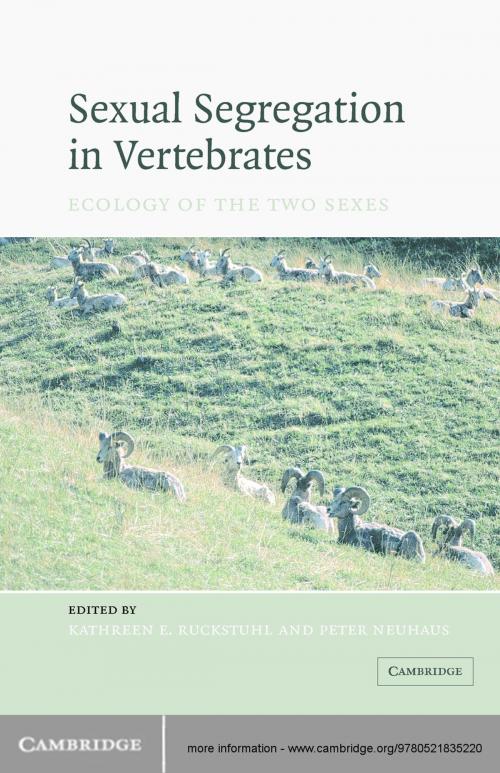Sexual Segregation in Vertebrates
Nonfiction, Science & Nature, Science, Biological Sciences, Zoology, Evolution| Author: | ISBN: | 9781139810173 | |
| Publisher: | Cambridge University Press | Publication: | January 5, 2006 |
| Imprint: | Cambridge University Press | Language: | English |
| Author: | |
| ISBN: | 9781139810173 |
| Publisher: | Cambridge University Press |
| Publication: | January 5, 2006 |
| Imprint: | Cambridge University Press |
| Language: | English |
Males and females often differ in developmental patterns, adult morphology, ecology and behaviour, and in many mammals males are often larger. Size dimorphism results in divergent nutritional and energetic requirements or reproductive strategies by the sexes, which in turn sometimes causes them to select different forage, use different habitats, and express differing social affinities. Such divergent life-styles often lead males and females to live large parts of their lives separately. Sexual segregation is widespread in animals. Males and females may share the same habitat, but at different times, for example, or they might use different habitats entirely. Why did sexual segregation evolve and what factors contribute to it? Sexual Segregation in Vertebrates explores these questions by looking at a wide range of vertebrates and is aimed as a synthesis of our current understanding and a guide for future research.
Males and females often differ in developmental patterns, adult morphology, ecology and behaviour, and in many mammals males are often larger. Size dimorphism results in divergent nutritional and energetic requirements or reproductive strategies by the sexes, which in turn sometimes causes them to select different forage, use different habitats, and express differing social affinities. Such divergent life-styles often lead males and females to live large parts of their lives separately. Sexual segregation is widespread in animals. Males and females may share the same habitat, but at different times, for example, or they might use different habitats entirely. Why did sexual segregation evolve and what factors contribute to it? Sexual Segregation in Vertebrates explores these questions by looking at a wide range of vertebrates and is aimed as a synthesis of our current understanding and a guide for future research.















